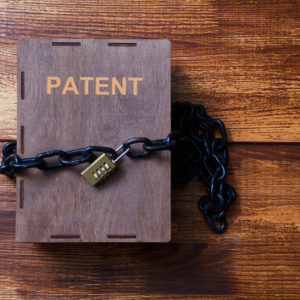Researchers at a Boston biotechnology firm recently released a groundbreaking study demonstrating that their new gene editing technology can significantly reduce cholesterol levels in patients at risk of heart attack and stroke.
Unfortunately, discoveries like this could have been unnecessarily delayed, thanks to a decade-old Supreme Court ruling that made it much harder for companies to develop these life-saving treatments.
The case — Association for Molecular Pathology v. Myriad Genetics — was one of several that have crushed American innovation in recent years.
Along with several other cases, the Myriad decision confused the question of what new technologies qualify for patent protection. Without clarity on patent eligibility, creators in cutting-edge fields are discouraged from seeking them. But without patent protection, they’re vulnerable to having their inventions copied and exploited by others. This makes innovators reluctant to develop and commercialize their creations.
A bipartisan legislative solution to this problem is in the works. Senators Chris Coons (D-Del.) and Thom Tillis (R-N.C.) just reintroduced the Patent Eligibility Restoration Act. The legislation clarifies the law to make clear that patent protections must be available for inventions in immunotherapy and other healthcare disciplines that operate on human genes.
The proposed legislation would rectify the effect of Myriad and the other errant cases from the early 2010s.
In Bilski v. Kappos in 2010, the Supreme Court held that a process invented for hedging risk in commodities trading wasn’t eligible to be patented — but failed to address what newly created processes were eligible. In Mayo Collaborative Services v. Prometheus Laboratories in 2012, the court ruled that many diagnostic tests and procedures were not patent-eligible.
In 2013, in Myriad, the court held that genetic sequences isolated outside the body are ineligible for patent protection — even though these lab-assembled sequences are chemically distinct from their naturally occurring counterparts.
Finally, in Alice Corp. v. CLS Bank International in 2014, the court found that specific “abstract ideas” are ineligible for patents — without clarifying what counts as an abstract idea.
Our legal system defines what makes an invention eligible for patent protection: it must be novel, useful and non-obvious. The law also clarifies that scientific formulas and the laws of nature are not patent-eligible. You can’t patent gravity or the theory of relativity.
For more than 150 years, eligibility law has been stable and readily applied. But, those four Supreme Court cases made a hash of the law. Researchers no longer know if their software tools, diagnostic tests and genetic sequences will be eligible for patents. And scientists in artificial intelligence and cryptography don’t know if their breakthroughs will be classified as “abstract ideas.”
The aftermath of lower-court confusion has disincentivized innovation with real-world consequences. A study published in the Washington and Lee Law Review found that due to the Mayo decision, the diagnostics industry has missed out on $9.3 billion in forgone investment.
The Patent Eligibility and Restoration Act would reverse such losses. Yet, those opposed to reform are pushing misinformation to scare consumers. Some claim the bill would make human genes eligible for patenting. These assertions are simply false. Indeed, the bill explicitly states that “a person may not obtain a patent for … an unmodified human gene, as that gene exists in the human body.”
The proposed bill would eliminate the uncertainty arising from the 2010 to 2014 Supreme Court decisions, providing the U.S. Patent and Trademark Office and the courts with clear guidance on patent eligibility. This would stop worthy inventions from being turned away at the door and prevent courts from invalidating patents on dubious grounds. It would also give confidence to creators in such areas as artificial intelligence and 5G technology that their innovations will be patent-eligible.
The Patent Eligibility Restoration Act will restore the intellectual property protections at the heart of the American innovation economy. That’s why we need Congress to step up as true champions for innovation and pass this critically needed legislation.


